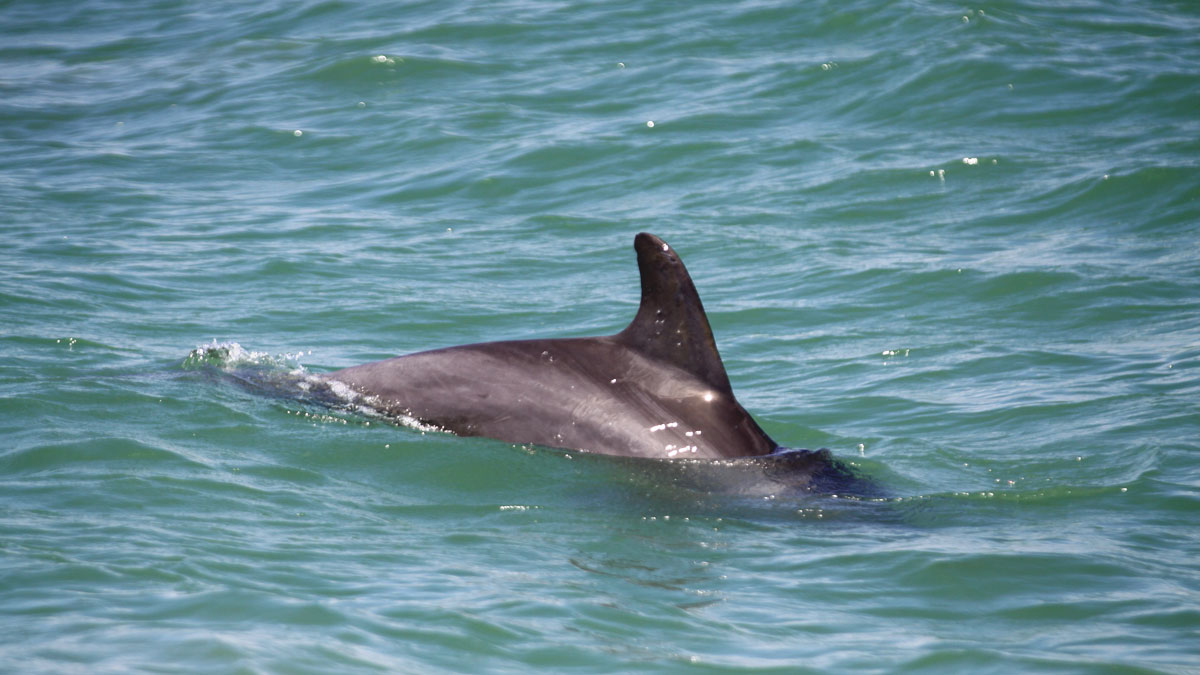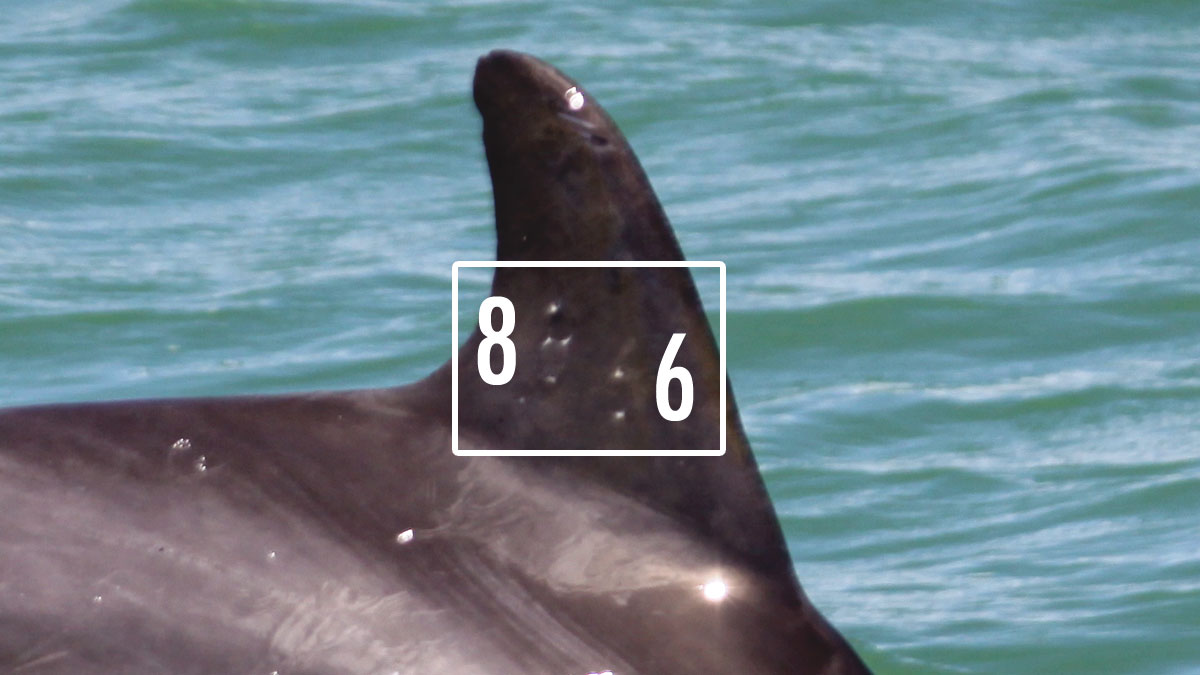Wild Dolphin Updates

A Dolphin Named Peanut Has an Interesting Past
This month we have some exciting information to share! We recently obtained some very interesting historical facts regarding one of the wild dolphins identified in our study as “Peanut.”
Peanut was first identified by our program in April 2017 and has been seen only 11 times since then in the Clearwater Bay area. This leads us to believe she is not a resident of the area but can sometimes be seen throughout the year. Peanut is a predominantly solitary animal, which is a commonly associated trait of male dolphins but can also frequently occur in females. While normally solitary, she has also had several sightings with a local female named Pirate, as well as several other known mothers.
Faded Mark on Dorsal Fin Reveals Surprising Discovery
Typically with photo-identification studies biologist look for the naturally acquired markings along the dorsal fin for bottlenose dolphins. However, we can sometimes notice scars and discoloration along the dorsal fin and body that can also aid us in identifying an individual. Peanut has minimal markings along the edge of her fin but we did notice some discoloration and scarring. Scarring of any kind can fade over time, which made it difficult to initially identify the freeze-brand number on her dorsal fin.
Approximately a year after her first sighting, one of our lead photo-ID team members was able to capture quality images of this animal that allowed us to distinguish the freeze-brand number “86.” This was a huge discovery for our team as this is only the second confirmed freeze-brand animal to be identified in our area over the last five years. The other dolphin, “Petal” (freeze brand “187”) lived in Sarasota Bay, Florida, and was observed by the Sarasota Dolphin Research Program (SDRP) from her birth in 2003 until 2014, when she shifted her home range north to Clearwater Bay. While CMA primarily uses natural dorsal fin markings such as nicks and notches, we occasionally see a freeze-brand applied during rescue/rehab cases or during health assessments conducted by other institutions.
Nearly 40-Year-Old Dolphin ID Number Dates Back to 1980
After discovering the freeze brand, we reached out to the curator of the Gulf of Mexico Dolphin Identification System (GoMDIS) at SDRP. GoMDIS is a collaborative effort among photo-ID and stranding groups around the Gulf to standardize, archive and compare images and data associated with individual bottlenose dolphins. CMA has provided stranding images and data since the collaboration formed in 2012. After several months of investigation, the GoMDIS partners were able to confirm that Peanut received her freeze brand in May 1980. This makes her at least 40 years old, depending on her age at the time. Cooperation between photo-ID studies and rescue teams allow us to learn the life history of animals and provide up-to-date information about their movements and associations

Take a look at this picture! Can you see the “86?” This gives you a good idea of how scars fade over time, and how hard photo-ID can be!
Clearwater Marine Aquarium’s Wild Dolphin Research Team provides monthly updates on the local dolphin population. Learn more about wild dolphins and help gather research data on the Dolphin Adventure Boat Tour or adopt a wild dolphin today.
Research conducted and photographs collected under the NMFS Scientific Research Permit No. 19749.